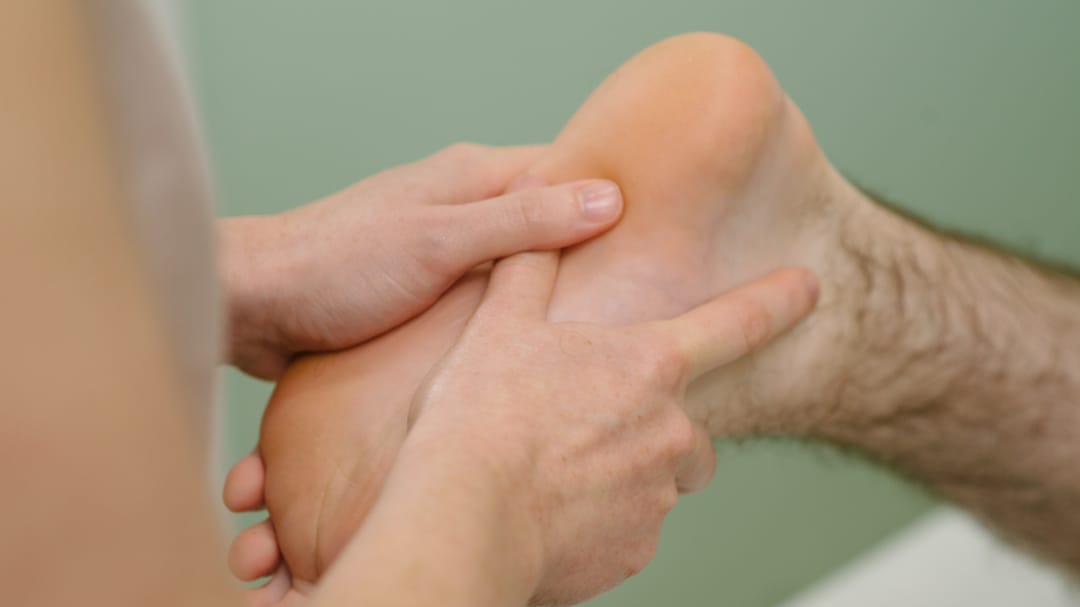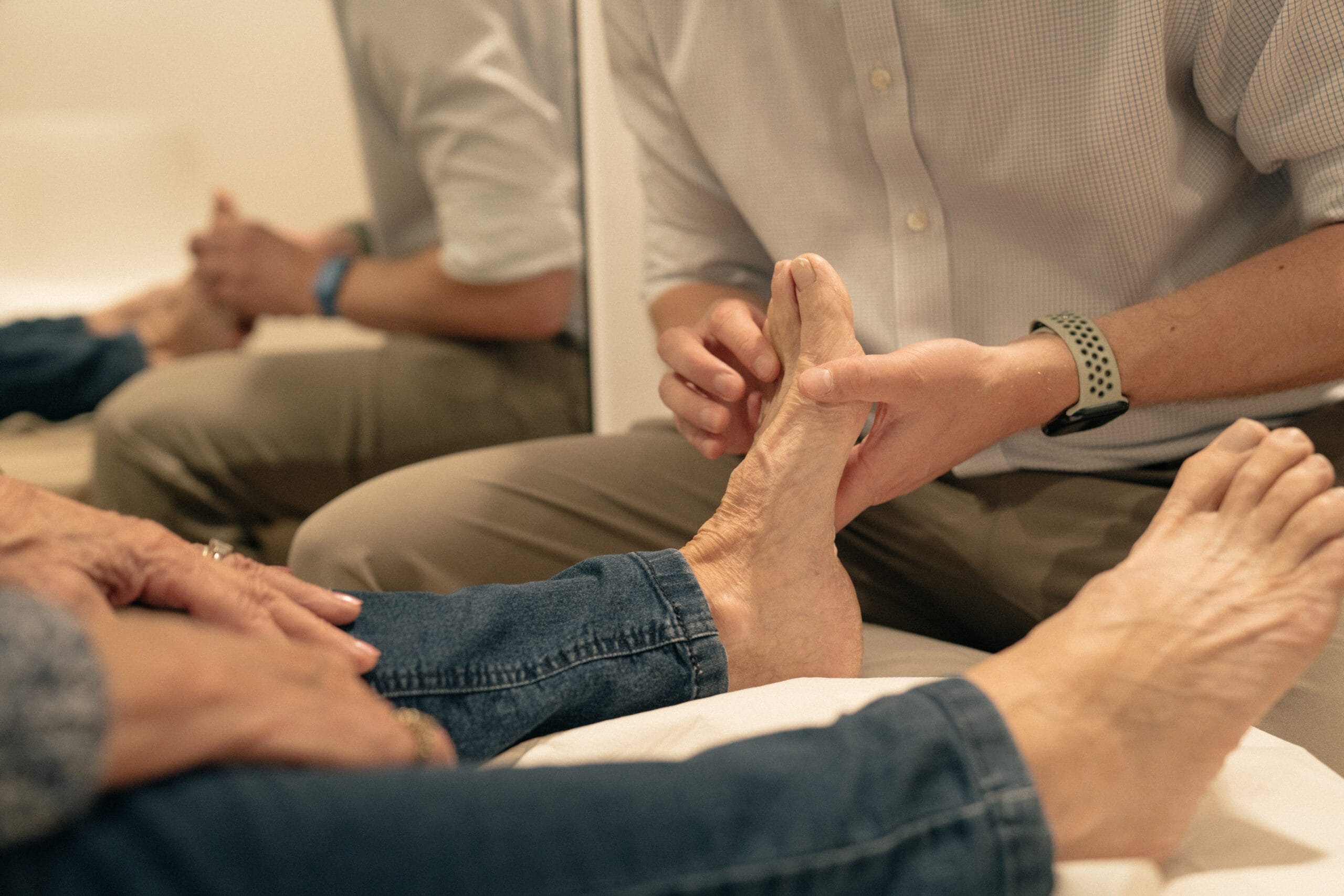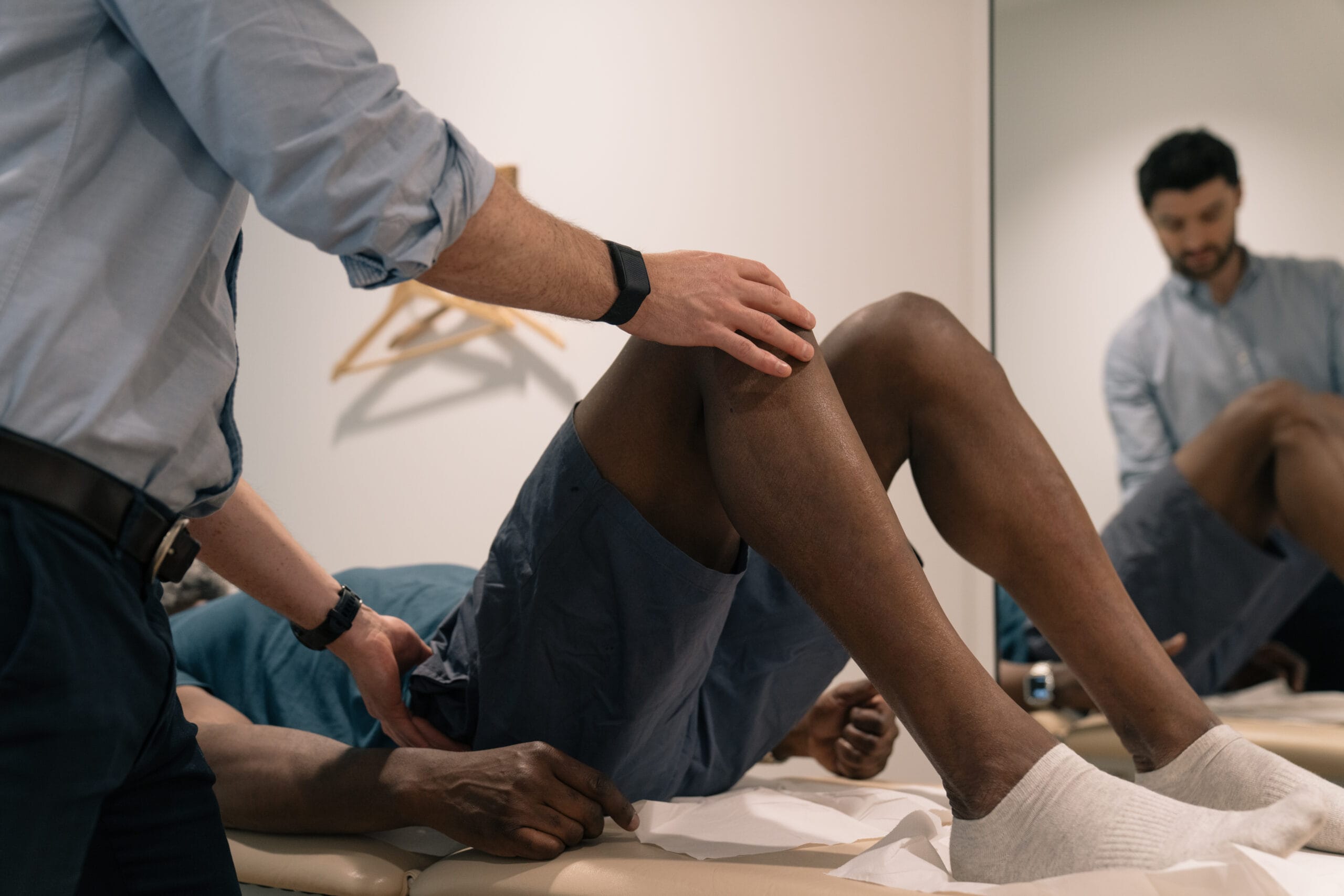Podiatry vs Foot Health: Understanding the Key Differences

Pure Sports Medicine
- 17 December, 2024
- Podiatry
- 4 min read
Podiatrist and Foot Care expert, Rob Payne, explores the distinctions between these two feet-focused fields, defining their terms and the types of conditions they typically address.

By understanding these differences, you will be better equipped to determine if you need an appointment and, if so, whether it should be with one of our skilled podiatrists or experienced foot care specialist.
What is ‘Podiatry’?
Podiatry is the study of all-things feet, ankle and lower limb. It is a broad field that covers a wide range of diagnoses, treatments and interventions. At Pure Sports Medicine, our dedicated team of Specialist Podiatrists are spread across our eight London clinics, ready to assess any presenting issue, provide an accurate diagnosis and determine an effective treatment tailored to the patient.
Although ‘Podiatry’ is the general term used for foot and lower-limb care, it can be divided into two main areas. First area being musculoskeletal (MSK), which focuses on diagnosing and treating sports injuries, prescribing orthotics and lower-limb rehabilitation. The second area focuses on routine foot care, which involves addressing common foot health problems such as corns, calluses, nail pathologies and diabetic footcare. MSK injuries are typically assessed by a Sports Podiatrist whereas foot health concerns, would be a visit to a foot care specialist.
What is ‘Foot Care’?
Previously known as ‘Chiropody’, ‘Foot Care’ or ‘Foot Health’, offers a variety of services designed to keep your feet healthy and tackle any specific issues patients may have. Regular treatments include the removal of calluses and corns which often form from consistent friction or pressure. Removing these provide much-needed relief and prevent future problems. Nail care focuses on the trimming and thinning of thick nails, tackling fungal infections, and soothing painful ingrown toenails.
Musculoskeletal Podiatry
Musculoskeletal podiatry deals with diagnosing and treating conditions affecting the bones, muscles, tendons, and joints of the feet and lower limbs. This area of podiatry is often focused on active individuals, athletes, or those with specific musculoskeletal issues such as pain, instability, or injury. MSK Podiatry is effective is addressing issues like plantar fasciitis, tendonitis, and stress fractures, which can significantly impact a person’s mobility and quality of life.
Key aspects of musculoskeletal podiatry include:
1. Sports Injury Diagnosis and Treatment
Podiatrists specialising in sports medicine can assess and diagnose injuries such as sprains, strains, fractures, and tendonitis, often caused by physical activity. They use advanced techniques such as gait analysis, movement assessments, and imaging to pinpoint the source of the problem and aid a diagnosis.
2. Biomechanical Assessments/Gait Analysis
Podiatrists assess how the feet and lower limbs work during movement (gait) and identify any abnormal patterns that may contribute to pain or injury. They also offer advice on footwear to optimise performance and reduce the risk of injury. This could be shoes with additional arch support or a wider fit.
3. Orthotic Prescription
A significant part of musculoskeletal care involves the prescription of custom orthotics or insoles. These devices are designed to improve foot alignment, reduce pain, and address specific issues like overpronation, forefoot varus, or flat feet. Stock Insoles can be a quick and easy solution to providing better support and stability whereas orthotic prescriptions are long lasting and completely customisable to the patient and can be designed with specific goals and measurements in mind.
4. Rehabilitation
After an injury, rehabilitation is crucial for regaining strength, flexibility, and function. Podiatrists help guide patients through exercises and stretching routines, often as part of a broader rehab program alongside a physiotherapist, to promote recovery and prevent future injury.
Routine Foot Care
On the other hand, Routine Foot Care focuses on maintaining overall foot health and addressing common, non-musculoskeletal issues. This includes general foot care practices that prevent complications, improve hygiene, and manage common conditions. Foot care issues are best addressed early-on as they can prevent longer lasting issues such as infection, nail overgrowth and changes in posture and body alignment.
Common areas of routine foot care include:
1. Nail and Skin Care
Routine podiatry appointments can help with issues like ingrown toenails, fungal infections, corns, calluses, verruca’s and cracked heels. Foot Care specialists may trim toenails, remove hard skin, or offer treatments for foot-related skin conditions.
2. Nail Surgery
Nail surgery is a minor procedure performed under local anaesthesia to remove part or all of the toenail, usually to treat ingrown toenails or nail infections that have not responded to conservative treatments. Nail surgery has been proven to be up to 98% effective in treating ingrown toenails, according to a 2024 NHS study.
3. Managing Chronic Foot Conditions
For individuals with conditions such as diabetes, routine foot care becomes essential to monitor and treat any signs of nerve damage, poor circulation, or infections that could lead to more serious complications. Symptoms to look out for are feet swelling, numbness, tingling or ‘pins and needles’ sensation and changes in skin colour.
4. Foot Health Education
Foot Care specialists often provide advice on the best footwear, how to care for feet at home, and how to manage minor issues before they develop into more significant problems.
Whilst both musculoskeletal podiatry and routine foot care are part of podiatry, they serve different purposes and cater to distinct needs of patients. Musculoskeletal podiatry often requires more specialised assessments and interventions, such as biomechanical evaluations, gait analysis, and the use of orthotic devices to correct or support foot and lower limb function.
Routine foot care, however, is aimed at maintaining good foot health and providing same-day diagnosis and treatment. It can also help prevent more serious conditions from developing and ensures that feet remain healthy and functional.
At Pure Sports Medicine we offer both services, ensuring that whether you’re dealing with an injury and need rehabilitation, or simply wanting to look after your feet, we can help. Our team is happy to provide advice and support to guide you on your journey to healthier feet.

Advice
Over the last 20+ years our experts have helped more than 100,000 patients, but we don’t stop there. We also like to share our knowledge and insight to help people lead healthier lives, and here you will find our extensive library of advice on a variety of topics to help you do the same.
OUR ADVICE HUBS See all Advice Hubs

